Key takeaways:
- Collaborative editing enhances creativity through diverse perspectives and real-time feedback, leading to stronger narrative outcomes.
- Utilizing tools like Adobe Premiere Pro, Frame.io, and Slack streamlines the editing process and improves communication among team members.
- Challenges in collaborative editing include managing conflicting visions, technical issues, and time constraints, emphasizing the need for adaptability and clear timelines.
- Successful collaborative sessions require clear communication, fostering inclusivity, and framing feedback constructively to promote a positive creative environment.
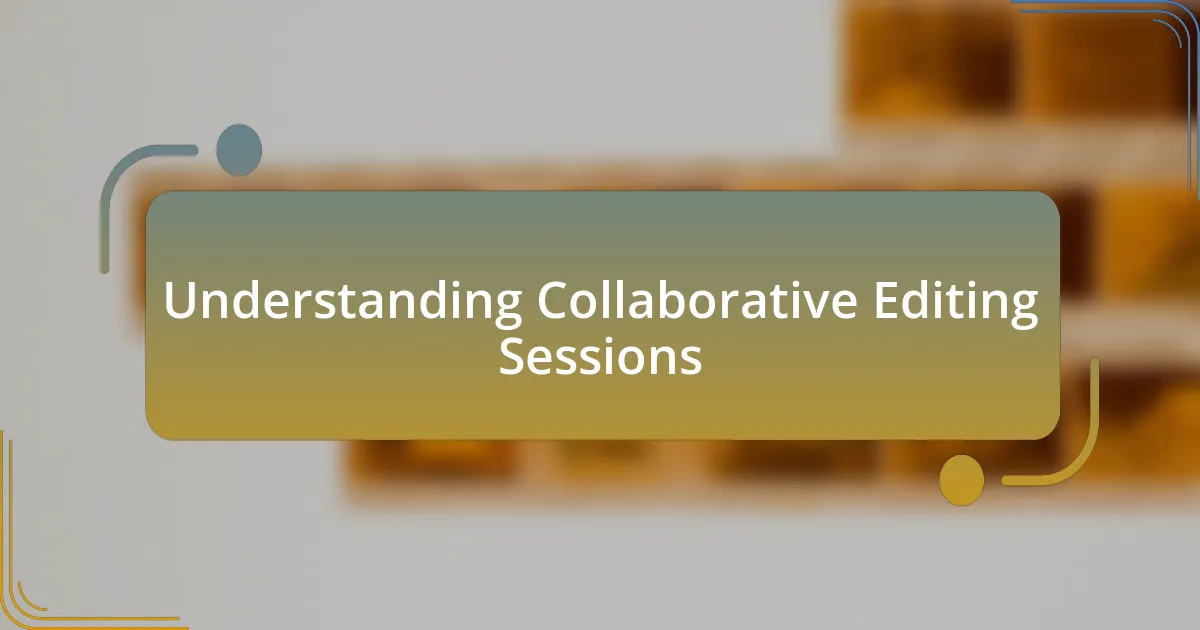
Understanding Collaborative Editing Sessions
Collaborative editing sessions are essentially teamwork in action, where multiple perspectives converge to enhance a project. I recall a particularly rewarding experience when I worked alongside a diverse group of editors on a short film. The creative tension that arose from our differing opinions ultimately fueled innovative solutions, highlighting how collective input can transform a piece.
During these sessions, everyone brings their unique skill set and experiences to the table, which can lead to unexpected breakthroughs. Have you ever considered how varied backgrounds can influence a narrative? I noticed that by integrating different voices in the editing room, the final cut not only became technically sharper but also resonated on a deeper emotional level with our audience.
What truly excites me about collaborative editing is the opportunity for real-time feedback. I remember how one suggestion during a session led to a pivotal scene being restructured, resulting in a much stronger climax. It’s a vivid reminder that collaboration isn’t just about sharing tasks—it’s about sparking creativity through dialogue and fostering a shared vision for the project.
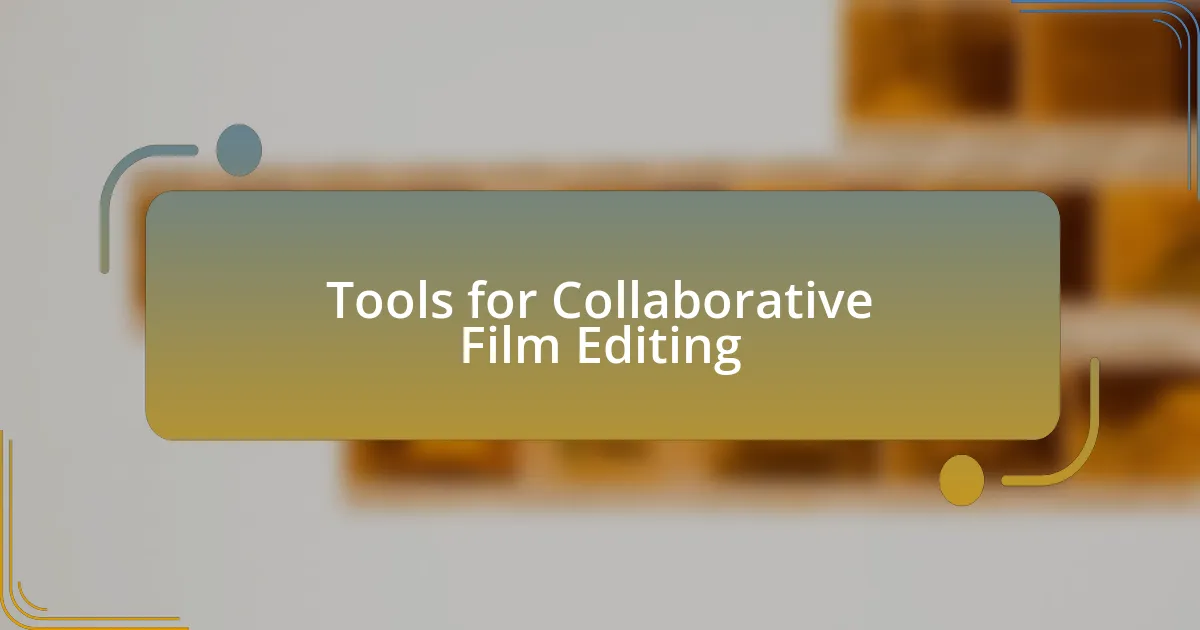
Tools for Collaborative Film Editing
When it comes to tools for collaborative film editing, platforms like Adobe Premiere Pro and Avid Media Composer stand out for their robust functionalities. I remember the first time I used Premiere’s Team Projects feature, which allowed me to edit simultaneously with colleagues from different locations. I was amazed at how seamless the process was; we could share our timelines in real-time, which not only sped up our workflow but also opened the floor for instant critiques and creative sparks.
Cloud-based platforms like Frame.io and Wipster have revolutionized the way we share and review footage. I vividly recall a session where, with just a click, my teammates could comment on specific frames, providing detailed feedback without the confusion of long email threads. It made me wonder: how did we ever manage without such clarity? This efficient feedback loop ultimately refined our edits and made the collaborative process feel much less daunting.
Another tool that has become integral in my editing sessions is Slack for communication and coordination. During an intense editing week on a documentary, I appreciated the integration of Slack with editing software. This combination allowed me to quickly resolve questions and share files, creating a real sense of camaraderie. Have you experienced that moment when a simple chat or quick call clears up confusion and inspires your next big edit? Those tools not only enhance productivity but also nurture a collaborative spirit that’s vital in filmmaking.
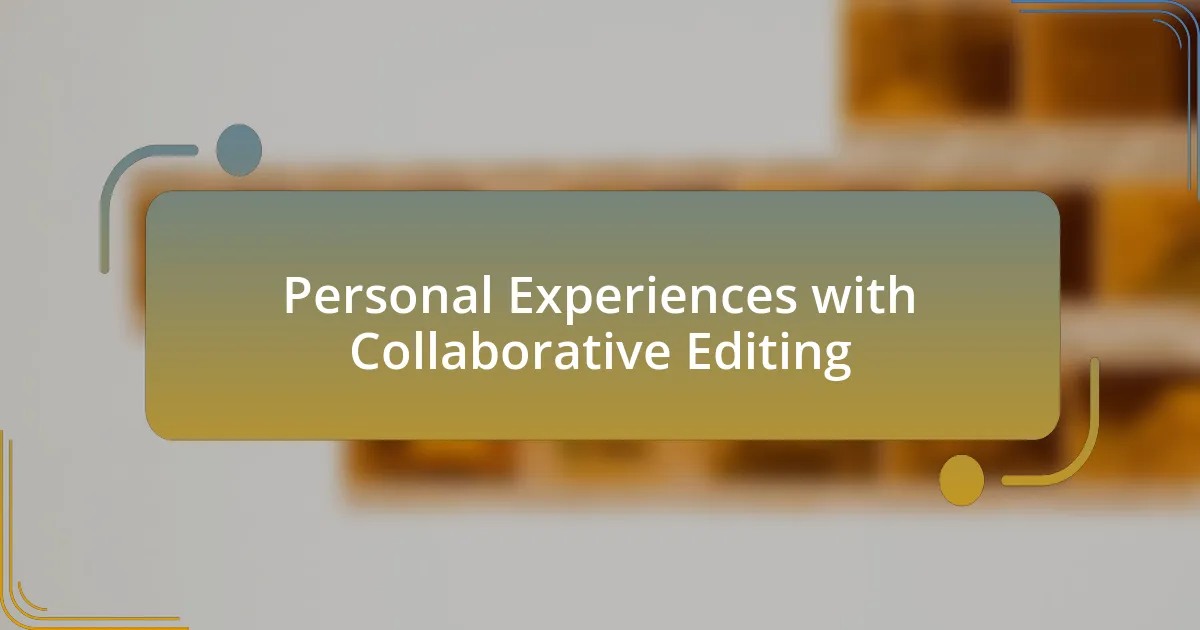
Personal Experiences with Collaborative Editing
Collaborative editing has truly transformed my creative process. One time, I worked on a short film with a tight deadline, and we decided to use a shared editing session in Adobe Premiere. As we tackled each scene together, I was surprised at how different perspectives shaped the narrative. One colleague suggested a cut I initially resisted, but after seeing it in action, I realized it amplified the emotional arc beautifully.
In another project, we used Frame.io for feedback, which made me appreciate the beauty of constructive criticism. I remember feeling frustrated late one night while wrestling with a scene, and then suddenly, a team member left a comment that shifted everything. It was as if they had flicked a switch in my brain, revealing a solution I hadn’t considered. Isn’t it fascinating how collaboration can uncover insights that one person alone might miss?
There was also a memorable editing session where we all gathered in one room to plan a series of transitions. The energy was electric. I could feel the excitement as ideas bounced around. Those face-to-face discussions turned into spontaneous brainstorming. Why is it that sometimes, a simple conversation can ignite an entirely new direction for a project? That palpable connection and instant feedback created an atmosphere where creativity flourished, and I left that session feeling invigorated and inspired.
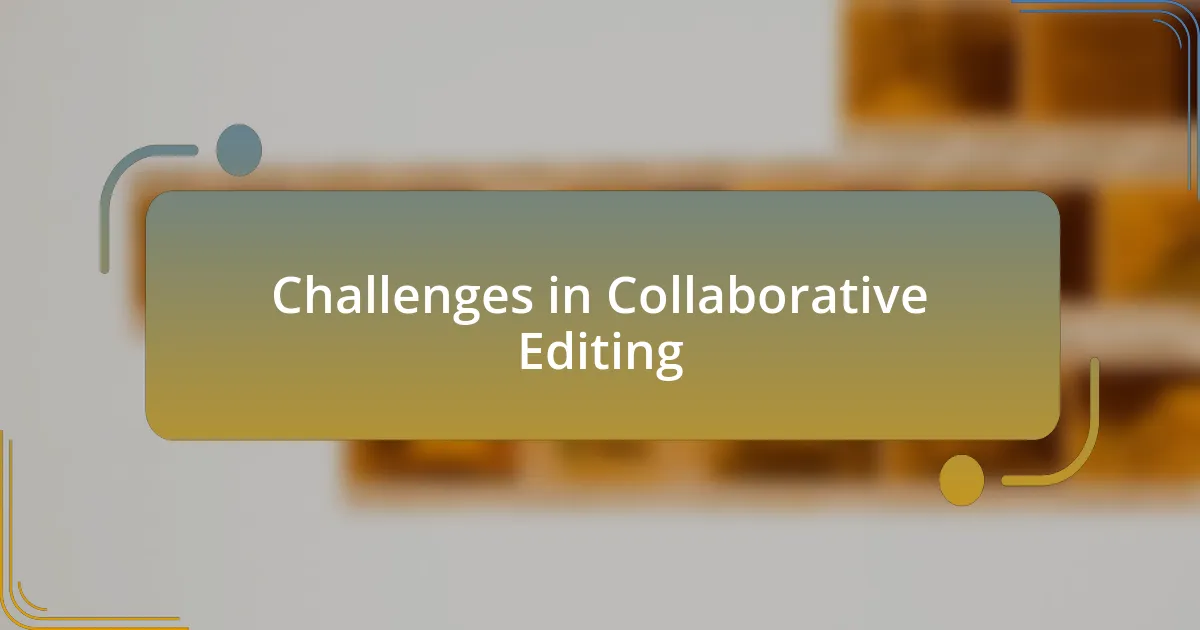
Challenges in Collaborative Editing
Collaborative editing is not without its hurdles. I recall a project where differing visions clashed during post-production. Our team was divided on the tone of a key scene; some favored a lighter approach, while others pushed for a darker feel. It was challenging to navigate these conflicts, as everyone was passionate about their ideas. What do you do when creativity pulls you in different directions? It can feel like walking a tightrope, balancing collaboration and maintaining a clear vision.
Another significant challenge involves technical issues. I remember a session where our editing software suddenly crashed, leaving us all staring at a blank screen. Frustration started to bubble up, and I could sense the anxiety in the room. How do you keep the momentum going when faced with such setbacks? In moments like these, it becomes crucial to have a backup plan and a strong support system. That experience taught me the importance of adaptability and resilience in collaborative environments.
Time management is also a big player in collaborative editing situations. I once joined a team that underestimated the time required for revisions based on feedback. We often found ourselves scrambling to meet deadlines, and the stress took a toll on creativity. How can a team find the right balance between thoughtful editing and urgency? I’ve learned that setting clear timelines and expectations can help alleviate some of the pressure, allowing for a smoother and more productive editing process.
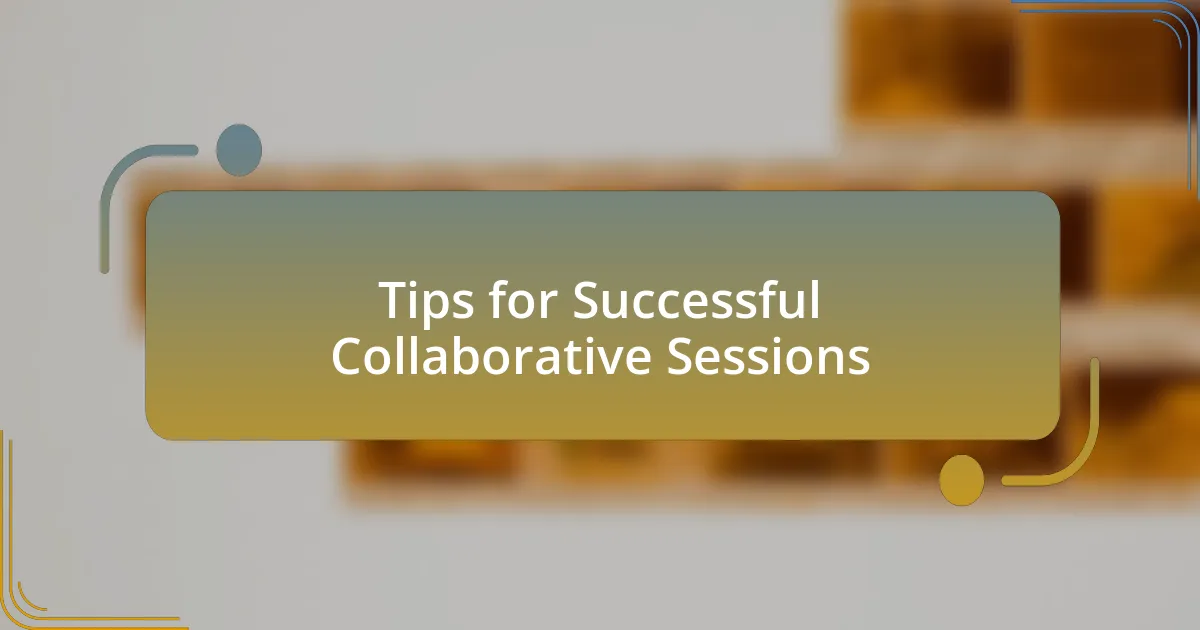
Tips for Successful Collaborative Sessions
When entering a collaborative editing session, establishing clear communication channels is essential. In one project, we initially relied on vague emails that led to misunderstandings and frustration. After switching to a messaging platform for real-time discussions, the atmosphere became collaborative and energizing. Have you ever felt lost in a sea of emails? Direct communication can bridge those gaps and keep creativity flowing.
It’s important to foster an environment of inclusivity and respect for all ideas. During a recent editing session, one of my colleagues shared a concept that seemed unconventional at first. Normally, I might have dismissed it out of hand, but encouraging open dialogue allowed us to explore that idea further. What if the next great scene comes from an unexpected source? Embracing varied perspectives can spark innovation and lead to extraordinary results.
Another key tip is to approach feedback constructively. I once worked on a film where critiques went unchecked, breeding defensiveness within the team. By framing feedback as a tool for growth rather than criticism, we transformed our sessions. Have you ever received feedback that felt personal? Shifting that mindset not only diminished tension but enriched our collaborative efforts, resulting in polished and cohesive final cuts.